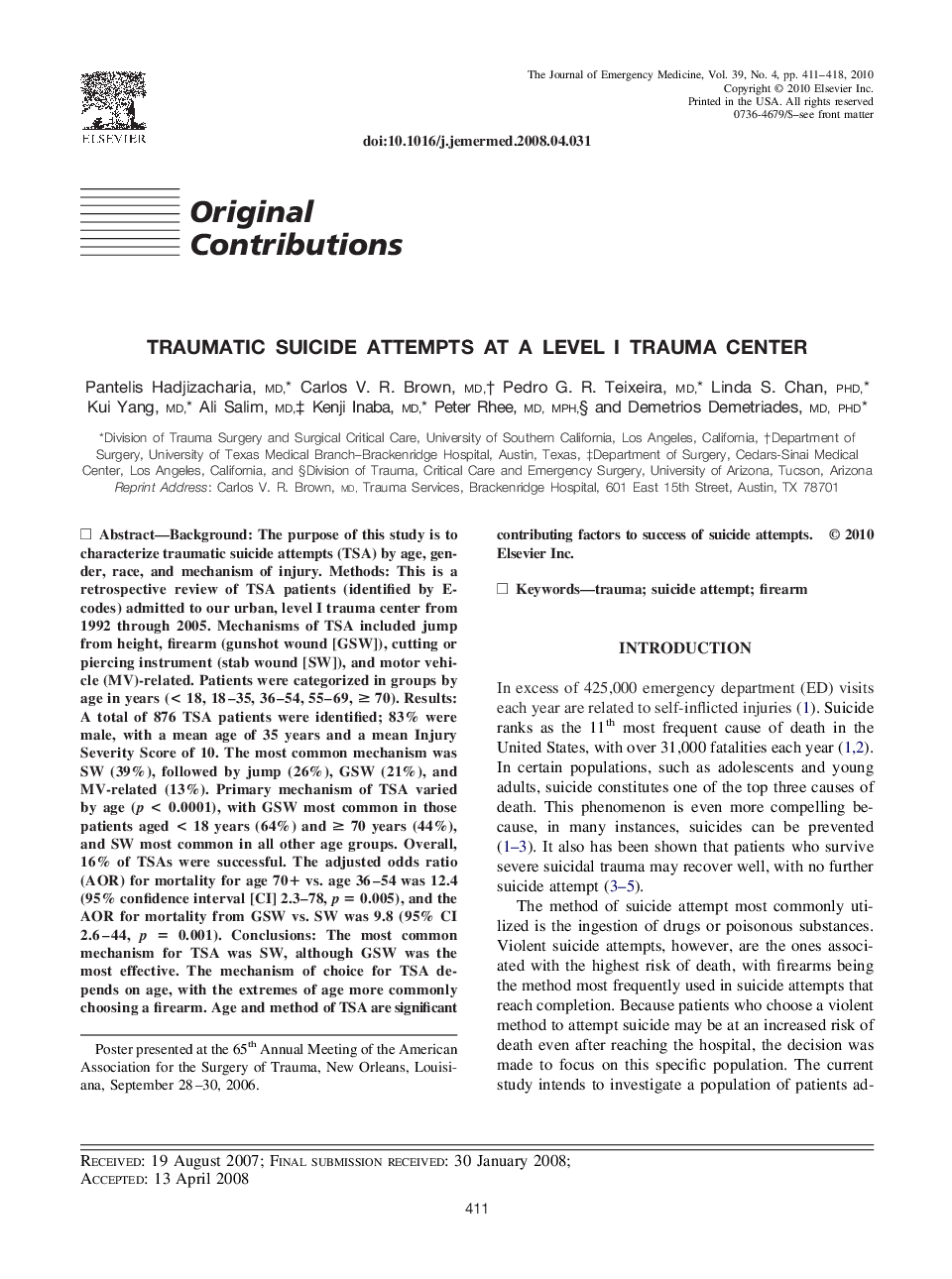| کد مقاله | کد نشریه | سال انتشار | مقاله انگلیسی | نسخه تمام متن |
|---|---|---|---|---|
| 3249800 | 1589179 | 2010 | 8 صفحه PDF | دانلود رایگان |

Background: The purpose of this study is to characterize traumatic suicide attempts (TSA) by age, gender, race, and mechanism of injury. Methods: This is a retrospective review of TSA patients (identified by E-codes) admitted to our urban, level I trauma center from 1992 through 2005. Mechanisms of TSA included jump from height, firearm (gunshot wound [GSW]), cutting or piercing instrument (stab wound [SW]), and motor vehicle (MV)-related. Patients were categorized in groups by age in years (< 18, 18–35, 36–54, 55–69, ≥ 70). Results: A total of 876 TSA patients were identified; 83% were male, with a mean age of 35 years and a mean Injury Severity Score of 10. The most common mechanism was SW (39%), followed by jump (26%), GSW (21%), and MV-related (13%). Primary mechanism of TSA varied by age (p < 0.0001), with GSW most common in those patients aged < 18 years (64%) and ≥ 70 years (44%), and SW most common in all other age groups. Overall, 16% of TSAs were successful. The adjusted odds ratio (AOR) for mortality for age 70+ vs. age 36–54 was 12.4 (95% confidence interval [CI] 2.3–78, p = 0.005), and the AOR for mortality from GSW vs. SW was 9.8 (95% CI 2.6–44, p = 0.001). Conclusions: The most common mechanism for TSA was SW, although GSW was the most effective. The mechanism of choice for TSA depends on age, with the extremes of age more commonly choosing a firearm. Age and method of TSA are significant contributing factors to success of suicide attempts.
Journal: The Journal of Emergency Medicine - Volume 39, Issue 4, October 2010, Pages 411–418